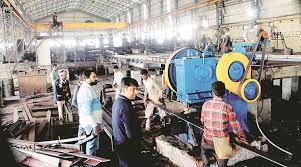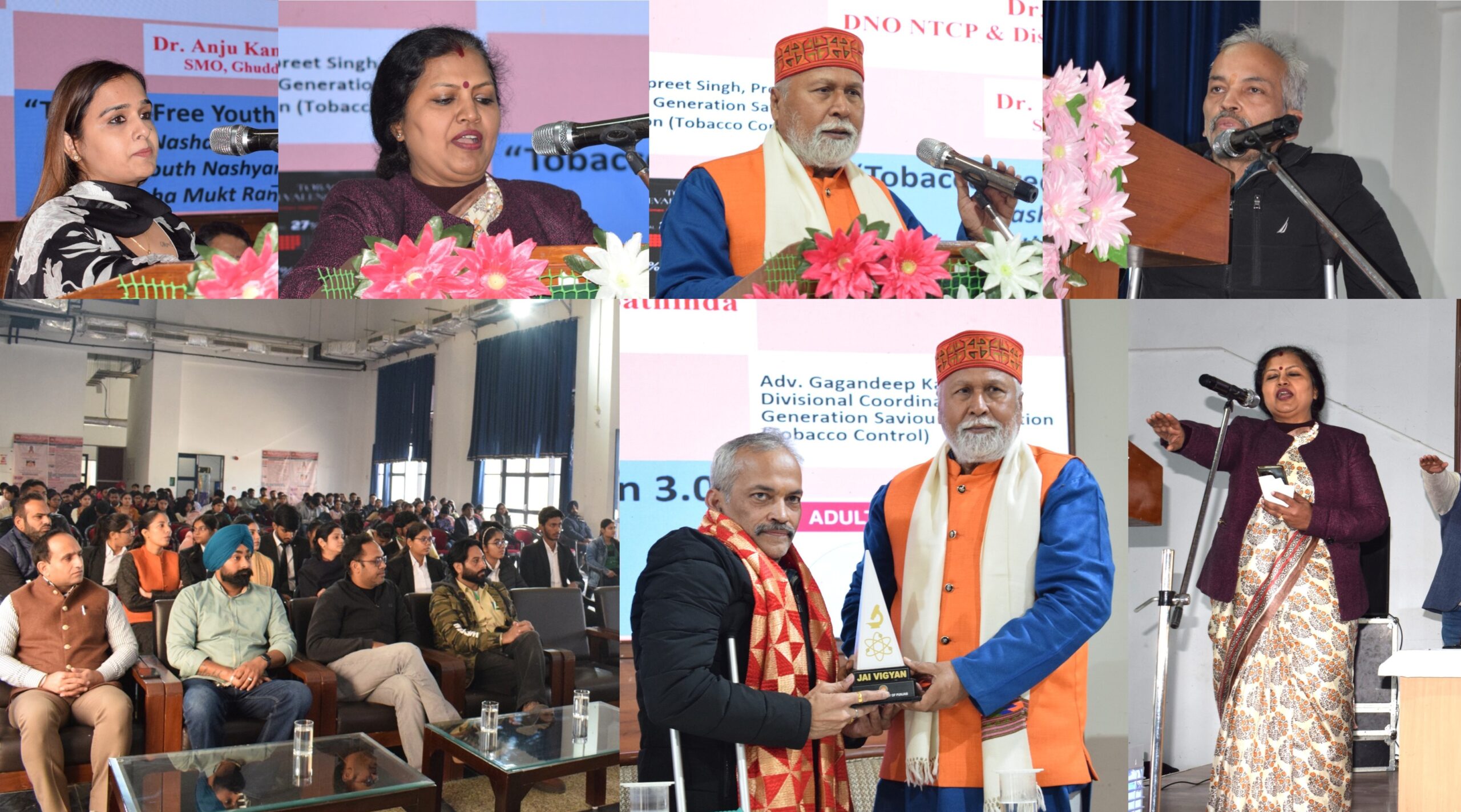Listen To This Post
Written by: AS MITTAL / Thenewsdose.com
Punjab must take decisive action now—another incremental document won’t suffice. What we need is a comprehensive and competitive policy that directly addresses tax asymmetry, transactional friction, and procedural delays. It is vital to implement transparent systems for tracking project implementation and incentive delivery, as those states that master the “MoU to factory” conversion are the ones attracting substantial investment, not just headlines.
As Punjab prepares to unveil its next Industrial Policy, it must take a decisive look at the successful strategies employed by its neighbouring states. This is not just about drawing inspiration; it’s about acting with competitive urgency. Rajasthan, Madhya Pradesh, and Uttar Pradesh have revolutionised their industrial promotion by integrating robust fiscal incentives with transparent, investor-friendly systems and proactive outreach efforts. The outcomes are impossible to ignore—the surge in investment proposals and manufacturing growth speaks volumes. While these states have developed flexible, sector-specific packages and GST-linked reimbursements, Punjab continues to operate under an outdated framework that often denies essential benefits to export-oriented industries with inverted duty structures (IDS).
If Punjab aspires to reclaim its status as a manufacturing and export hub, its upcoming policy must be bold, flexible, and performance-driven. It cannot afford to implement mere incremental fixes; it must be competitive on the scale of its neighbours by ensuring faster execution, greater efficacy, and an unwavering commitment to clarity, courage and accountability.
Learning from Neighbours’
Rajasthan: Flexibility and Fiscal Depth
Rajasthan’s Investment Promotion Scheme (RIPS) 2024 stands out as one of India’s most flexible incentive models. It empowers investors to choose from three impactful options: a SGST reimbursement of up to 75% for seven years, a capital subsidy of 10–20% on eligible fixed investments, or a turnover-linked incentive of 1–1.4% of net sales for a period of ten years. Furthermore, the state offers complete exemptions on stamp duty, land conversion, and electricity duty, along with capital subsidies of up to ₹1.5 crore and a 5% interest subvention for MSMEs.
A particularly innovative feature is the 2% sales-based incentive for industries under the inverted duty structure (IDS), effectively neutralising the working capital disadvantage caused by unrefunded input taxes. With this approach, Rajasthan has shielded its manufacturers from structural GST distortions—a critical issue Punjab has inadequately addressed. The results are striking: at the Rising Rajasthan Summit 2024, the state secured investment commitments totalling around ₹35 lakh crore.
Madhya Pradesh: Regional Balance and Rewarding Jobs
Madhya Pradesh has charted a different yet equally effective path. Its Industrial Promotion Policy 2025 directly ties fiscal incentives to measurable outcomes, such as job creation, exports, and regional balance. The state provides full exemptions from stamp duty and registration fees, as well as electricity duty waivers for a period of seven years. Additionally, it offers a monthly employment subsidy of ₹5,000 per worker for a period of five years in labour-intensive sectors.
With an innovative “incentive multiplier,” units located in priority districts or generating substantial export income receive an extra 30–50% benefit. At the Global Investors Summit 2025, proposals reached an impressive ₹30.77 lakh crore, demonstrating investor confidence in a policy that prioritises actual performance over superficial promises.
Uttar Pradesh: Aggressive Exemptions and Sectoral Focus
Uttar Pradesh’s Industrial Investment and Employment Promotion Policy 2022 merges regional targeting with aggressive exemptions. It delivers 100% stamp duty relief in Bundelkhand and Purvanchal, offers 75% in Madhyanchal and Paschimanchal, and provides 50% in developed industrial zones like Noida and Ghaziabad. Like Rajasthan, UP empowers investors to select between SGST reimbursement, capital subsidies, or investment promotion subsidies.
Furthermore, sectoral policies under UNNATI 2024 and the Electronics Manufacturing Policy offer land rebates of up to 50% and 100% GST reimbursement for a period of up to 10 years. This comprehensive approach, backed by visible outreach, has propelled UP into the top five states for new manufacturing investments, particularly in electronics, defence, and textiles.
Punjab’s Untapped Potential
Punjab’s investment landscape is lagging behind that of its counterparts in India. From March 2022 to March 2025, Invest Punjab has reported cumulative investment proposals amounting to approximately ₹96,000 crore. While this is noteworthy for a state of its size, it pales in comparison to the couple of lakh crore commitments seen in Rajasthan, Madhya Pradesh, and Uttar Pradesh. The state’s merchandise exports were ₹54,480 crore for FY25, underscoring its inherent potential but also highlighting its limitations in value-added manufacturing.
The core issue isn’t a lack of ambition; it’s a failure of execution. Significant projects are scarce, industrial focal points are underutilised, and existing policies do not adequately address the structural challenges that deter long-term investors.
Punjab must take decisive action now—another incremental document won’t suffice. What we need is a comprehensive and competitive policy that directly addresses tax asymmetry, transactional friction, and procedural delays. It is vital to implement transparent systems for tracking project implementation and incentive delivery, as those states that master the “MoU to factory” conversion are the ones attracting substantial investment, not just headlines.
Three Critical Priorities
Punjab’s forthcoming industrial policy must focus on three critical priorities: flexibility, transparency, and time-bound facilitation. Like Rajasthan, Madhya Pradesh, and Uttar Pradesh, Punjab must not only meet but exceed these standards to remain competitive. The state should empower investors by providing a choice among three incentive tracks: SGST or turnover-linked reimbursement, capital subsidy, or fixed investment incentive. This level of flexibility will enable firms to align state support with their business models, thus expanding participation.
Second, addressing the inverted duty structure is non-negotiable. Punjab should introduce a 2 per cent sales-based incentive for industries facing GST-IDS disadvantages. This essential measure will restore strength to many of the state’s legacy industries that are currently losing ground due to tax distortions.
Third, eliminating transactional costs that deter the establishment of new units is imperative. Full exemptions from stamp duty, Change of Land Use (CLU) charges, registration fees, and electricity duties for a minimum of seven years should be mandated across all industrial clusters. Additionally, a wage subsidy of ₹5,000 per worker per month for five years will attract job-intensive manufacturing, while export-based incentives tied to a 20% annual growth target will drive sustained performance.
To ensure scale and long-term commitment, Punjab must offer turnover-linked incentives of up to 2 per cent of net sales for a period of ten years, with enhanced support for labour-intensive and export-oriented sectors, such as textiles, auto parts, agricultural machinery, and sports goods. Shared logistics, warehousing, and sea connectivity subsidies should be utilised to significantly reduce export turnaround times.
Punjab must guarantee a 30-day single-window clearance process for land, utilities, and registration through a digitally tracked platform. Every approval, disbursal, and delay must be evident and measurable. Furthermore, publishing an annual Industrial Incentive Effectiveness Report is essential to demonstrate transparency, accountability and qualities that investors demand.
Way Forward
Punjab’s new industrial policy must pair fiscal competitiveness with unwavering credibility. The competition among states is no longer about catchy slogans; it’s about complex data, speed, and genuine competitiveness. While Rajasthan neutralises tax distortions, Madhya Pradesh rewards job creation, and Uttar Pradesh eradicates entry barriers, these states have proven that a well-structured incentive regime, underpinned by credible execution, can attract billions without sacrificing fiscal discipline.
The entrepreneurial spirit and all the essential components to thrive, but it must match the generosity and agility of its neighbouring states while showcasing its unique advantages. A flexible, transparent, and performance-linked policy framework—anchored in fiscal realism and accountability—can reposition Punjab as a leading industrial producer in India’s landscape. The message is loud and clear: industry gravitates towards opportunity, not just rhetoric. It’s high time to make ‘Brand Punjab’ a top choice for investors once more.
-The Author is Vice-Chairman Sonalika ITL Group, Vice-Chairman(Cabinet minister rank) of the Punjab Economic Policy and Planning Board, Chairman of ASSOCHAM Northern Region Development Council.
Views expressed in the opinion piece are personal and solely of the author. They do not necessarily reflect the news dose.com views.













